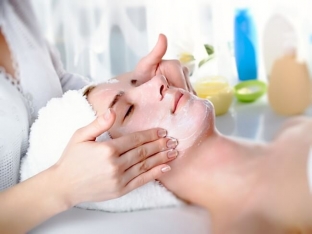Chemical peeling has been used to improve skin condition since ancient Egypt, Greece and Rome. It began to be used therapeutically in the 1800s, using chemicals to treat pigmentation and scars. Despite the existence of many other skin rejuvenation procedures, chemical peels do not lose ground and are still among the top five most effective. Why? Let's figure it out together.
What is a chemical peel?
Chemical peel – This is a procedure that is performed to improve the condition of the skin or treat some of its diseases. The essence of chemical peeling is the effect on the skin of a chemical exfoliating substance, which destroys certain areas of the skin with their further regeneration and rejuvenation.
Chemical peels are used both for cosmetic purposes (poor skin condition, uneven skin tone, dyschromia and wrinkles) and therapeutic purposes (solar keratosis, acne, acne scars, vitiligo). Chemical peels can be applied locally, for example in cases of periorbital pigmentation or rhinophyma. Body peels should be done very carefully as these areas will recover slowly compared to the face.
Chemical peel solutions are prepared by pharmacists or sold ready-to-use. Basically, this applies to shallow peels. Deeper penetration peels are usually made by doctors.
When evaluating the patient's readiness for peeling, it is worth paying attention to the medical history: you need to take into account the general state of his health, allergic reactions, bad habits, whether the patient has undergone cosmetic procedures before, etc. There are practically no special contraindications for superficial peels. As for procedures with deeper penetration of the peel, it is required that the patient is physically and mentally stable, able and willing to follow all post-procedure instructions. Pregnant and lactating women are prohibited from such procedures.
Classification of chemical peels
Chemical peels are divided into three categories depending on the depth of their penetration:
- shallow;
- medium;
- deep.
Shallow peels affect only the epidermis; medium-depth peels penetrate completely into the epidermis and papillary dermis; deep peels penetrate into the middle of the reticular layer of the dermis. The depth of peeling depends on many factors, such as the type of chemical element used, its concentration, skin condition and mode of application. There is a direct relationship between the depth of the procedure, the level of discomfort and recovery time after the procedure, the risk of complications and the intensity of improvement in the overall condition of the skin.
Shallow peels
Used to "refresh" the skin, improve its texture and tone, and help treat acne and superficial dyschromia. The ideal candidate for a shallow peel procedure is a person with moderate skin damage and dyschromia who wants a minimum recovery time and is willing to undergo a series of procedures to achieve the desired results. Superficial peels do not eliminate wrinkles and deep pigmentation.
Medium depth peels
The main indications for such peelings – dyschromia (solar lentiginosis), numerical solar keratosis and changes in skin structure. Wrinkles and acne scars may only partially disappear.
Deep peels
Indications: dyschromia, wrinkles, precancerous skin tumors and acne scars. Deep peels are considered the most effective non-surgical methods of facial skin restoration.

Are there any complications after peelings?
The risk of potential complications after peels increases with the depth of penetration of the peel and includes the following:
- changes in pigmentation (hyper- and hypopigmentation)
- scarring
- infection
- itch
- skin structure changes
- acne.
The most dangerous complication of phenol-based peels is cardiotoxicity. In 6% of cases, an arrhythmia occurs, but this can be avoided if the procedure is carried out correctly.
What are the benefits of peels?
Chemical peeling is a powerful and inexpensive method of wide impact in aesthetic medicine. Chemical peels can be done in conjunction with other procedures such as surgery, dermal fillers, and toxicity.






Add a comment